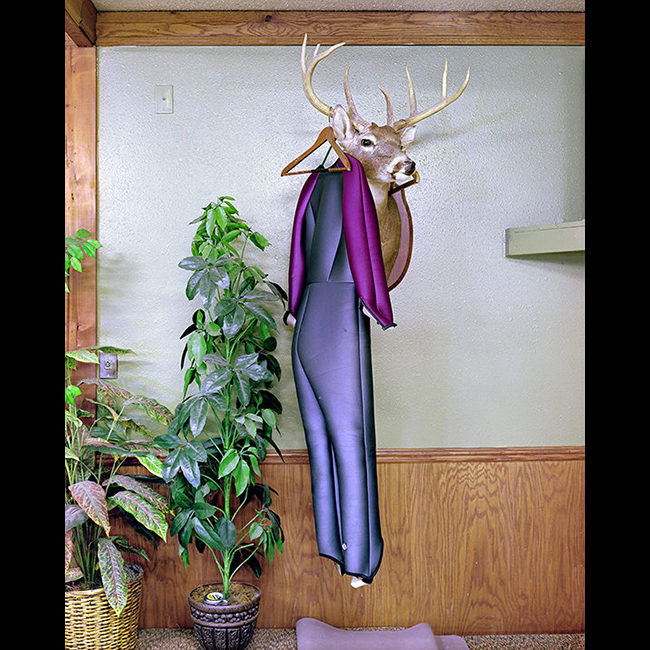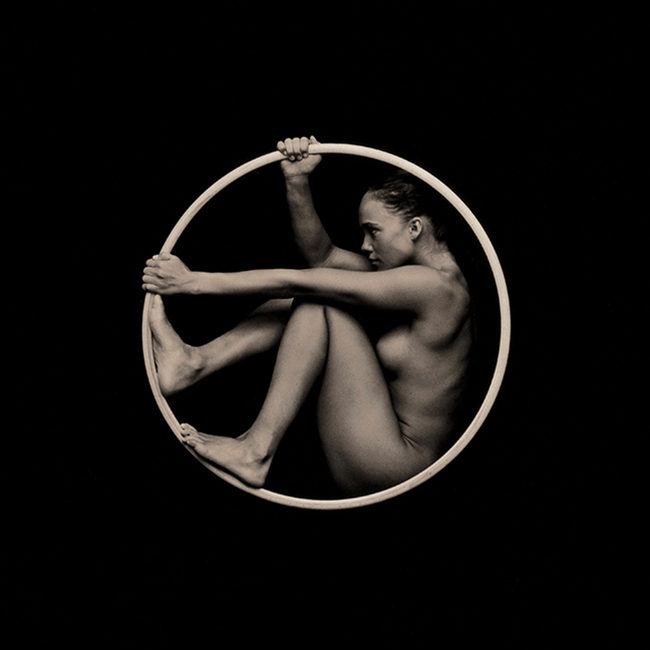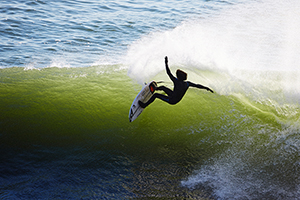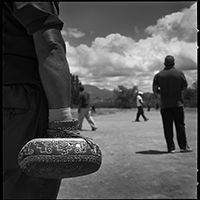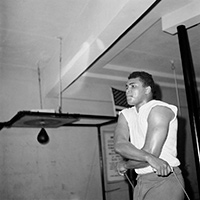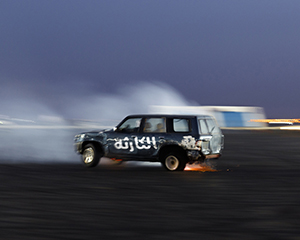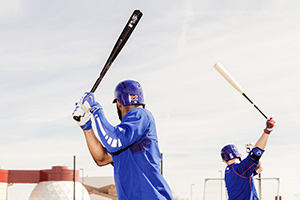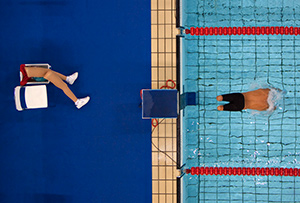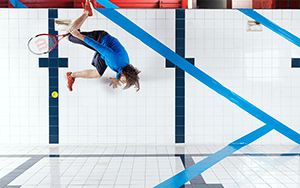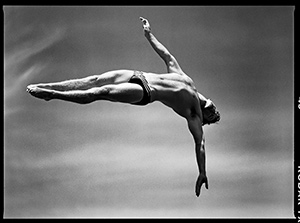Every July, the grandest of bike races gets under way in France with about 200 riders, hundreds of trailing support staff and journalists, and tens of thousands of exuberant—and frequently zany—spectators. Among those covering this year’s Tour is Australian photographer Marcus Enno—aka Beardy McBeard—who has been capturing the spirit of the race with his bold images of riders, race fans, and majestic scenery. With just a few days before the 21-stage race ends in Paris, we asked Enno what it’s like to work the race. More images and information are available on his blog at BeardysCaravan.com
PDN: How did you get started in cycling photography? And when did you start photographing the grand tours of Europe?
Marcus Enno: I had been a commercial photographer for almost ten years before I developed an interest for cycling photography but I had been interested in cycling itself for much longer. In 2013, I travelled to the Tour de France as a spectator and decided to bring my camera along. I ended up coming back with some great images, so I had a photography exhibition and invited cycling related media. The next thing I knew I was shooting assignments for a number of Australian publications. The following year, I decided to go back to Europe in a camper-van with my wife to chase the Giro d’Italia. [Then] I held another successful photography exhibition. During the preparations for that, I was diagnosed with Hodgkins Lymphoma and underwent four months of chemotherapy. As soon as I was in remission in 2015, I headed to Europe for three months to chase both the Giro d’Italia and Le Tour de France.
PDN: Do you make your living doing this?
ME: Yes, I make my living from a combination of commercial cycling shoots, covering races [for magazines] and selling prints, calendars and books.
PDN: Are you working on spec, or do you have clients commissioning you to cover different stages?
ME: Yes, I usually have a brief [from] clients such as capture spectators or specific riders but most commission me for my style, so briefs are often very open and up to my interpretation.
PDN: How do you go about making pictures that stand out from so many other photographers who are covering these races? Do you have a particular strategy for that?
ME: It’s always a challenge. I tend to draw on my commercial experience and try to see the race in a different light from a straight sports photographer. I am always looking for different angles, interesting lighting and shadows and the characters that bring the race to life.
PDN: What’s in your kit?
ME: I carry two cameras: a Canon 1Dx mark II and Canon 5D mark III. My lenses are 15mm f/2.8 fisheye, 17-40mm f/4L, 50mm f/1.2L, 24-70mm f/2.8L II, 70-200mm f/2.8L II, 100-400mm f/4.5-5.6L II. And [I carry] two Canon 600EX-RT Speedlites. I love the 50mm 1.2L but it’s mainly reserved for portraits of riders at starts and finishes.
PDN: Describe a typical day on the tour for you. How do you decide where to position yourself?
ME: A typical day on tour starts with a plan. I spend countless hours scouring maps and the internet looking for the ideal points to capture the riders, landscape and spectators. Some days you only get one or two chances to see the race so you need to make sure you can capture something unique. Once the last of the riders have passed there is the challenge of getting ahead of them again if you want to [photograph them] at another location or get to the finish. This is where good planning is essential as you need take your own [detours] from the race route, hoping to get ahead. Once the race is over it’s a scramble to sort through thousands of images, select, process and send off images to various clients.
PDN: What are the biggest challenges of covering these races, and getting good pictures of the day’s stage?
ME: One of the biggest challenges is the varying quality of the internet connections at wherever I’m staying. It not only makes researching a route with Google Maps tediously slow, but high-res photos being sent to clients can often take hours or not happen at all if the connection is that bad. Unpredictable fans are another big challenge since they can and will jump into your frame just as the yellow jersey (i.e., the overall race leader) is about to pass. Finally the biggest challenge is the unrelenting work of 21 long days, packing up all your belongings and moving to different accommodations every night.
PDN: Any moments for you from this year’s Tour de France that are going stick with you forever? Any pictures you’re particularly proud of?
ME: Stage 9 finishing on the climb up to the ski village of Arcalis in Andorra [on July 10]. Just before the riders arrived, a storm front moved through bringing with it heavy rain and hailstones. It was horrendous conditions with the camera gear getting saturated and eventually fogging up due to the fact it was 100 degrees Fahrenheit just before the storm. I managed to capture some images of just how hard of a race the Tour is. The riders even reported having bruises from being pelted by the hailstones.
PDN: Who’s on your team? You make references to Speedy, your intrepid driver. Who else?
ME: I always travel with a driver so I focus on getting the shot and navigating and even seeing photos as we drive to the next location. I also have two mates in Sydney—Nick and Simon—that help put my blog BeardysCaravan.com together.
PDN: What’s your advice for photographers who aspire to cover these major stage races and classics? Anything you wish someone had told you when you were starting out?
ME: This is a job for the passionate. Some days you think it’s the best job in the world, others you just feel like packing it in when things don’t go according to plan. If you want to cover grand tours, expect to be more exhausted than ever because when these thing get rolling they wait for no one. I guess a lesson I have learnt is that you have to be efficient at looking through thousands of images and picking out the significant moments. With hundreds of gigabytes of images you need to get all your editing done quickly otherwise you can’t catch up. One-day races are easier, but as most of my work is destined for social media, you need to work fast.
Related Stories:
The Not-So-Glamorous Life of Pro Cycling
Tour de Panoramic
How Bicycling Magazine’s Design Director Finds and Collaborates with Photographers (For PDN subscribers; Log in required)

